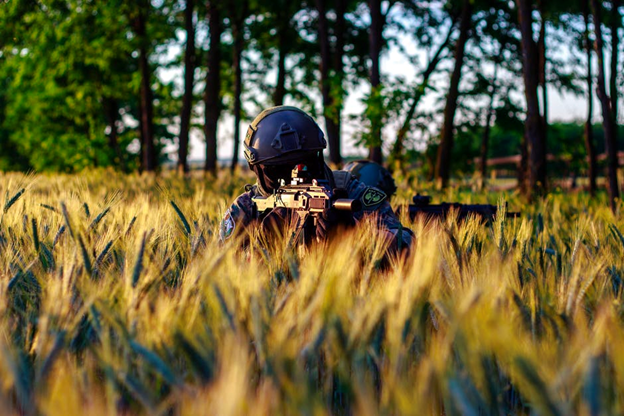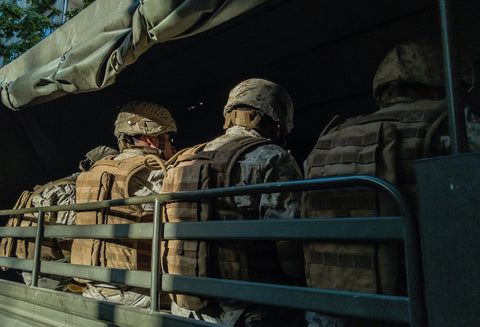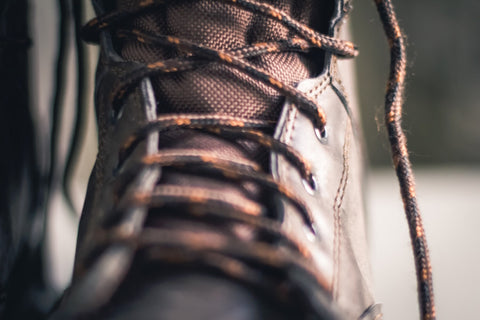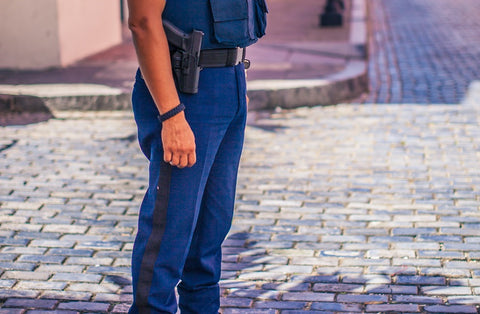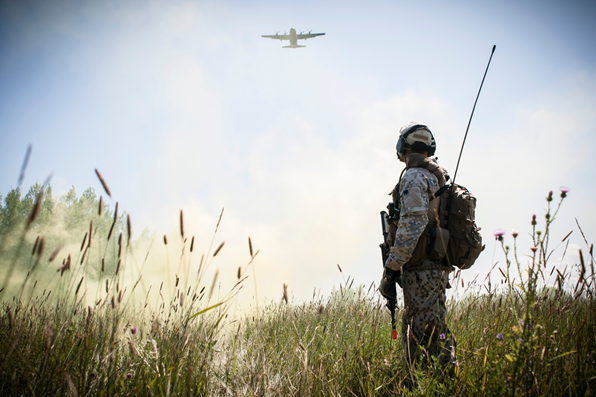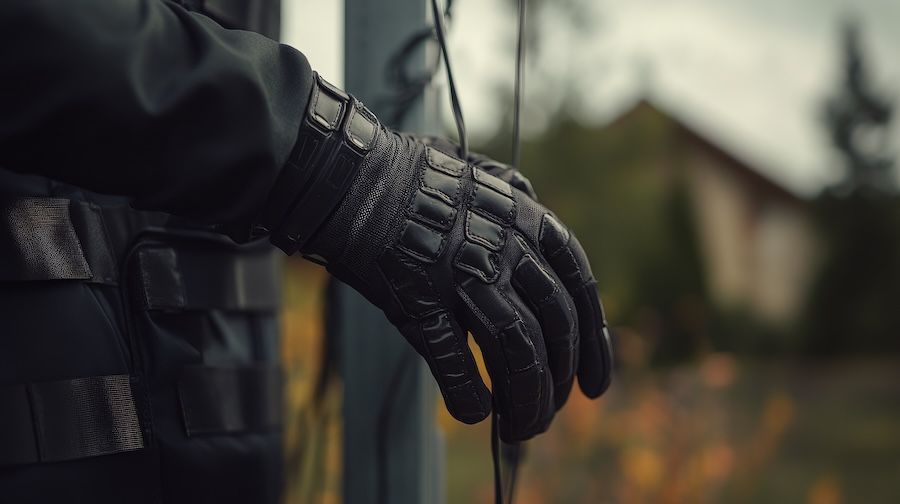Beyond the Basics: Building Your First Tactical Loadout
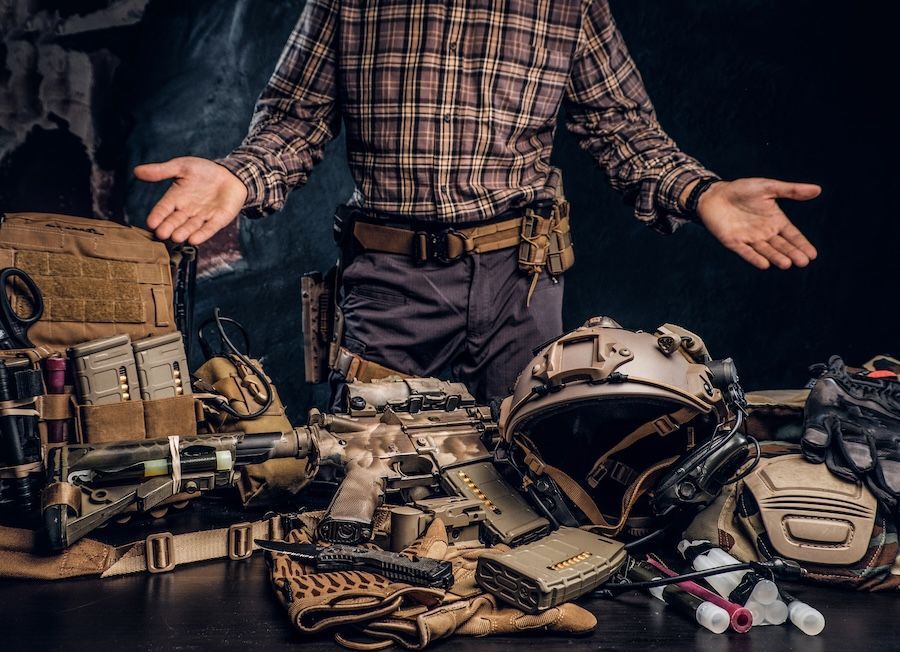
With tactical operations, your gear is everything. Having the right loadout can mean the difference between success and failure in the field. It’s about more than just packing a bag; it's about selecting the right tools, clothing, and gear to keep you safe and efficient.
Whether you're in law enforcement, the military, security work, or even an outdoor enthusiast, your loadout needs to support your mission, adapt to your environment, and keep you moving without slowing you down.
Summer is just around the corner, which means higher temperatures, longer days, and tougher conditions. This time of year brings unique challenges, from intense heat and humidity to prolonged hours spent in the field.
The heat can be brutal on both you and your equipment, making gear selection even more crucial. In this guide, we’ll walk you through everything you need to consider as you build your first tactical loadout, with a focus on how to stay cool, comfortable, and prepared for whatever the mission throws your way.
Assessing Your Mission or Environment
Your first step in building a tactical loadout is understanding the mission or environment you’re going to face. Every operation requires different gear, depending on whether you're working in an urban setting, out in the wilderness, or navigating through a hot, desert-like environment.
The more you know about your surroundings, the better you can choose the right equipment.
In the summer, heat becomes a huge factor. With rising temperatures, your gear needs to help you stay cool, hydrated, and agile.
If you’re heading out for an extended operation in a desert or hot climate, lightweight, breathable materials will be key. Your gear needs to combat the heat while keeping your core essentials easily accessible. In contrast, if you're working in a more temperate or shaded area, you might not need the same level of hydration or sun protection.
Consider a hot-weather operation, like a desert rescue mission. In this scenario, you’ll need a loadout with lightweight, moisture-wicking clothing, sunscreen, and lots of water storage. Hydration packs will be essential here, along with UV protection. You’ll also need to ensure that your backpack is organized in a way that makes it easy to quickly grab a water bottle or first aid kit in case of emergencies.
On the other hand, a nighttime surveillance mission in an urban setting requires a different approach. In the summer, even at night, temperatures might remain warm. The key here is gear that’s light, low-profile, and built for long hours of monitoring without discomfort. If you’re working in the dark, night vision, compact lights, and tools for staying quiet will become just as important as comfort.
A solid tactical loadout starts with evaluating these environmental factors. Understand the mission and location, then tailor your gear for those specific needs. Your choices can significantly impact the success of your mission, so it’s worth taking the time to carefully select your loadout based on these crucial factors.
Start with the Basics: Clothing and Footwear
The foundation of your loadout is the clothing and footwear you choose. These basics are crucial for comfort, mobility, and protection, and they’re often the first thing you need to adapt for hot summer conditions.
The goal is to select gear that helps you stay cool, dry, and free to move, even when the temperature climbs.
Start with your clothing. In the summer heat, breathable fabrics are your go-to options.
Look for tactical pants and shirts made from moisture-wicking materials that move sweat away from your body and dry quickly. Fabrics like lightweight cotton, merino wool, or moisture-wicking blends are great for hot environments. These materials allow air to flow, preventing heat from building up, and reduce the chances of chafing during long hours of wear.
For shirts, choose something with UV protection if you’ll be spending long periods outside. This type of clothing shields your skin from harmful sun exposure, which is crucial for preventing burns during hours of exposure. T-shirts and long sleeves are both viable options, depending on your need for sun protection versus mobility.
Footwear is another critical area where comfort and durability matter most. Look for tactical boots designed for all-day wear. In the summer, you'll want boots that are lightweight and breathable yet durable enough to handle different terrains. Consider boots with mesh panels or ventilation holes to improve airflow. Sturdy soles and ankle support are necessary for maintaining balance and reducing fatigue when walking for hours on end.
Other essential clothing items to consider are hats, gloves, and socks. Lightweight tactical hats can shield your face from the sun, while UV-protective gloves can help protect your hands. For socks, choose moisture-wicking options that prevent blisters and keep your feet dry.
Don’t forget about sun protection for areas that are often overlooked! Consider neck gaiters, cooling towels, or sun sleeves to keep your skin safe and cool.
Tactical Backpacks: Balancing Size and Function
When picking a backpack, think about the length of your mission. For shorter operations, a smaller EDC (Everyday Carry) pack will likely suffice. These packs should be lightweight and compact, with enough space for only the essentials: a water bottle, a flashlight, a multitool, and a first-aid kit. These packs are perfect for operations where you don’t need to carry too much, but they should still be durable enough to handle the rigours of your task.
On the other hand, for longer missions in hot weather, you’ll need a larger tactical backpack with more space.
Look for one with compartments that allow you to store everything in an organized way.
Hydration packs are key here, allowing you to drink hands-free while on the move. Consider adding a solar-powered charger to your loadout, which can be stored in a compartment designed for quick access. This is especially useful in the summer when you’re more likely to be in the field for longer stretches, and a charge on your phone or GPS could be a lifesaver.
Accessibility is another important feature to consider. In hot weather, you’ll need quick access to items like sunscreen, a hat, or a hydration system. Packs with front-facing zippers or quick-release straps are excellent for summer operations, as they allow you to access your gear without slowing you down.
Ultimately, the backpack you choose should cater to your specific mission needs. Keep in mind that you don’t want to over-pack. A well-organized, efficient loadout will prevent unnecessary strain, keeping you comfortable and prepared no matter what your mission throws at you.
Essential Gear: Tools and Technology You Can’t Miss
When it comes to building your tactical loadout, the right tools and technology can make or break your success in the field. These are the pieces of gear that will ensure you stay efficient, informed, and safe during your operations.
Tools like multitools, flashlights, and communication devices are essential, but there are also more specific tools that you’ll want to think about for different environments.
For summer missions, you need gear that’s lightweight but still reliable under pressure. A multitool is a must-have for most tactical operations. Its versatility allows you to handle various tasks, from cutting rope to repairing gear, all with one compact tool. Look for one that features a variety of blades, screwdrivers, and pliers, while being light enough not to add too much weight.
Flashlights, too, are vital, whether you're navigating in the dark or just need to see what you’re working on. Opt for something small but powerful with long battery life, so it doesn’t die halfway through your mission.
Summer heat adds its own set of challenges to your tools. A portable charger can be a lifesaver, especially if your mission keeps you in the field for long hours. Consider something that can charge multiple devices at once, as communication is key in a tactical operation.
GPS devices are also crucial if you're navigating unfamiliar territory or remote areas. They can help you find your way and avoid getting lost in dense, off-the-grid environments. Look for GPS units that are durable and have long battery life, as you don’t want to be caught without one in the middle of nowhere.
When you’re selecting tools, think about your mission and how long you’ll be out in the field.
For short hikes or operations, a simple multitool, flashlight, and phone might suffice. But for longer operations, you'll need a broader range of tools, including a GPS system, a more powerful flashlight, and a backup power supply. Depending on your environment, you might also need specialized items, like UV-protective gear to protect your skin during the day.
Hydration and Nutrition: Stay Energized in Hot Weather
In hot weather, hydration is a top priority. Dehydration can quickly diminish your performance and lead to heatstroke, so having a solid hydration system is essential.
Look for hydration bladders or bottles that fit easily into your pack. These allow you to drink hands-free while on the move, which is especially helpful during long operations.
When packing for a summer operation, make sure you’ve got enough water and snacks to last you for the day, plus extra in case of unexpected delays.
Along with hydration, your nutrition also plays a huge role in keeping your energy levels up.
Energy bars, trail mix, or even electrolyte tablets can provide a quick boost when you need it most. Opt for compact, high-calorie foods that are easy to store and won’t spoil in the heat. Avoid anything too heavy or difficult to eat on the go. Items like protein bars or electrolyte-infused drinks are perfect for giving you the stamina needed to push through long summer days.
Remember that it’s not just about drinking enough water. It’s also about replenishing the nutrients and electrolytes you lose through sweat. Pack items like electrolyte tablets or powder to mix with your water. These will help you maintain your body's balance, preventing cramps and fatigue in the hot weather.
Protective Gear: Safety in All Conditions
Protective gear should always be part of your tactical loadout, but in the summer, comfort and breathability are paramount. Whether you're facing extreme temperatures or rough terrain, you need gear that can keep up with the elements while protecting you.
Look for lightweight, breathable options for gloves, knee pads, and even body armour. Ventilated gloves are essential for hot climates, as they protect your hands without making them sweaty and uncomfortable.
In some cases, lightweight ballistic protection is necessary. Fortunately, there are new materials that offer protection without sacrificing comfort, so look for armour that's both lightweight and breathable.
Safety is the priority, but mobility is also key. A loadout that’s too heavy or restrictive can seriously limit your performance. Try to find a balance between protection and comfort, ensuring that you have the gear you need without overheating or feeling weighed down.
Loading Up: How to Pack Your Gear for Efficiency
Packing your gear in a way that’s both efficient and accessible is one of the most important skills to master when preparing for a tactical operation. Whether you’re setting out for a short mission or an extended deployment, you’ll need a system that allows you to get to your gear quickly without wasting time.
The way you pack your loadout can mean the difference between getting the job done smoothly and fumbling around for tools when you need them most.
Start by thinking about the mission you’ll be on and what gear you’ll need most frequently.
For items you’ll use often, like a flashlight or multitool, keep them easily accessible.Many tactical backpacks come with exterior pockets or loops that allow you to attach gear like a flashlight, water bottle, or even a radio for quick access. This is especially important for summer operations, where you don’t want to waste time digging through your pack in the heat.
Try to avoid overloading your backpack, as excess weight can slow you down, especially when you’re working in hot weather. Look for ways to consolidate gear into multi-use items. For example, a hydration system can double as a water reservoir and a small, compact pack that you can use for carrying small essentials. Use compression straps or packing cubes to keep everything organized and prevent your gear from shifting around as you move.
Another great strategy is to use modular packing systems, where you can add or remove components based on your mission’s specific needs. If you’re going on a long mission, you might need extra food, water, and medical supplies. If you’re on a short operation, you can pare down your loadout to the essentials.
Whatever your mission, packing efficiently will allow you to focus on the task at hand rather than dealing with unorganized or misplaced gear.
Final Check: Ready for Your First Tactical Operation
Before heading out, make sure everything in your loadout is in top shape and ready for deployment.
Make sure all your equipment is working properly. Test your flashlight, GPS, and any other technology to ensure they’re charged and functioning.
Check your hydration system for leaks and ensure your tools are sharp and ready to go. It’s also a good idea to do a practice run with your gear.
If you’re heading out into the field, consider doing a mock operation to familiarize yourself with your loadout. This will help you identify any issues or inefficiencies before you’re in a real situation.
As part of your final check, review the weather forecast and make any necessary adjustments to your loadout. If you’re operating in a hot climate, for example, you might want to add extra sunblock or cooling gear to your pack.
Ensure that everything you need is within easy reach and practice with your loadout before hitting the field. Test everything to make sure it works as expected. Stay safe, stay ready, and don’t forget to share your own tips with others - learning from one another is what makes the tactical community so strong.


